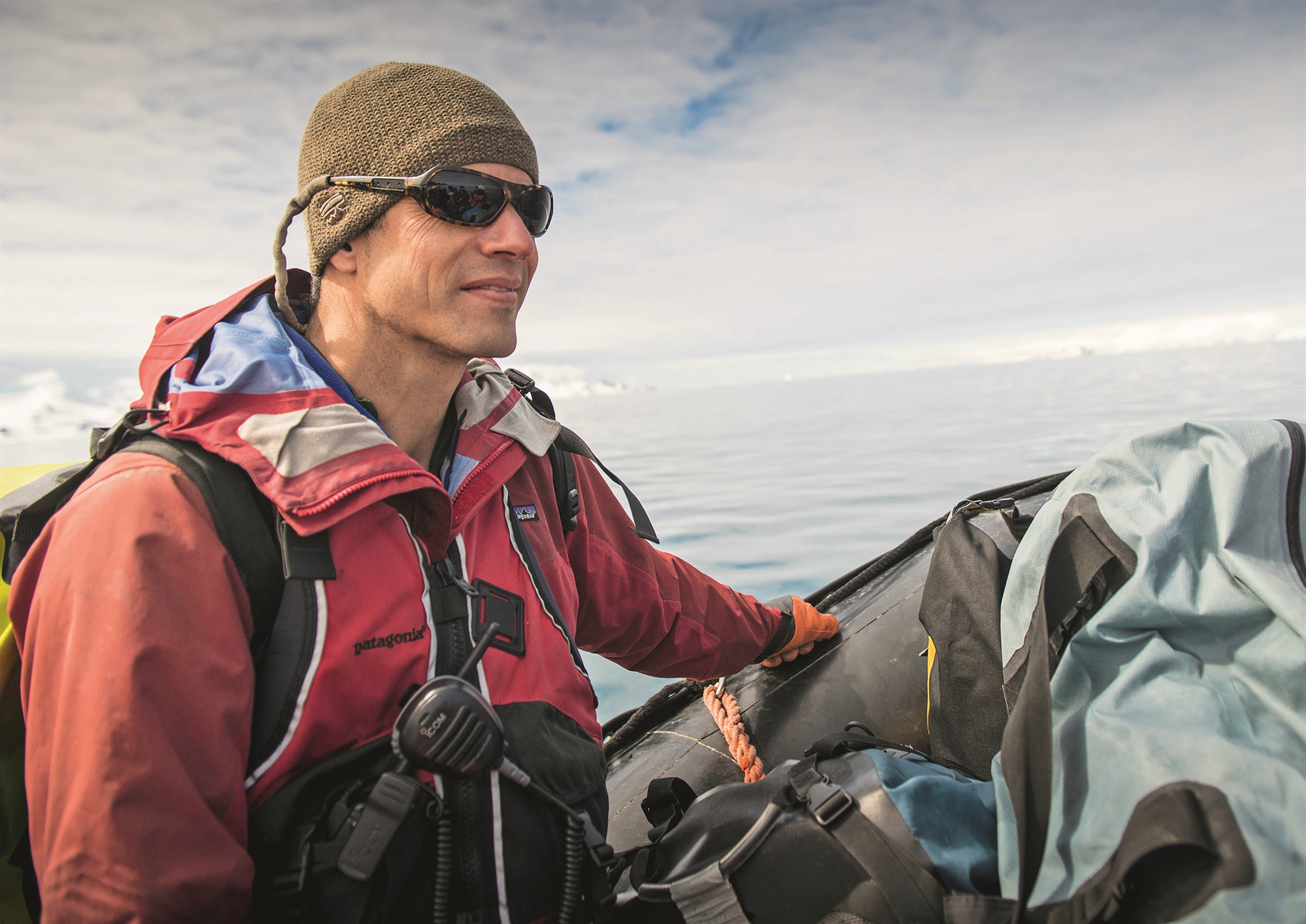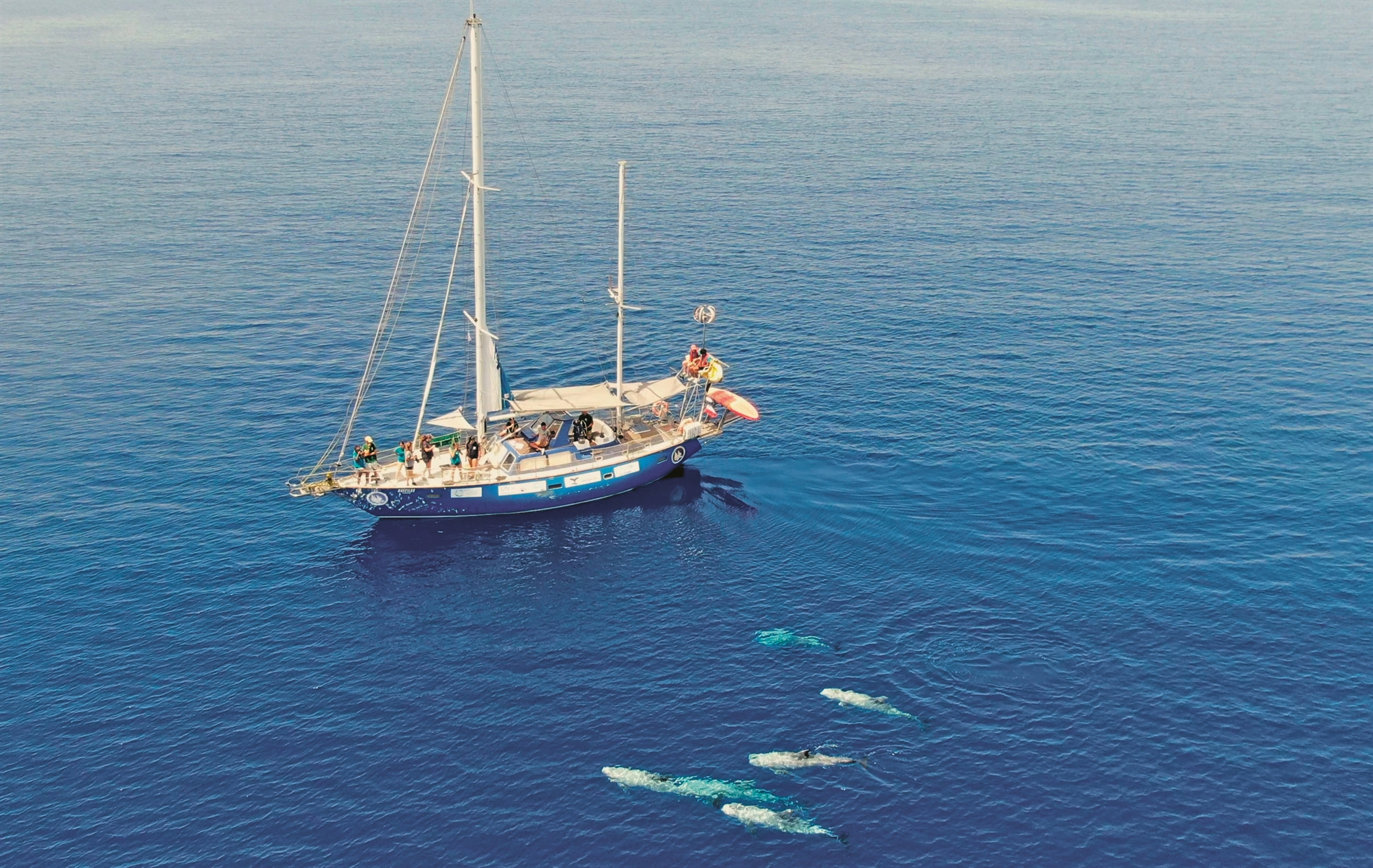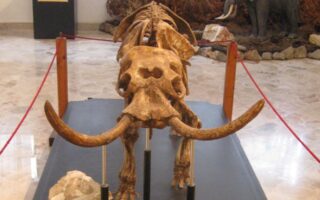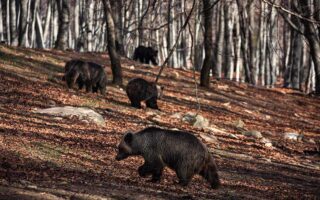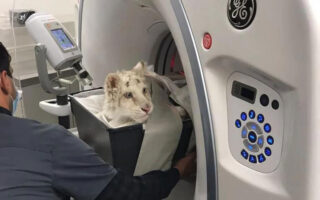Keeping tabs on the Aegean’s and the world’s cetaceans
Scientists talk to Kathimerini about a project for protecting whales and dolphins and their habitats in Greece and elsewhere
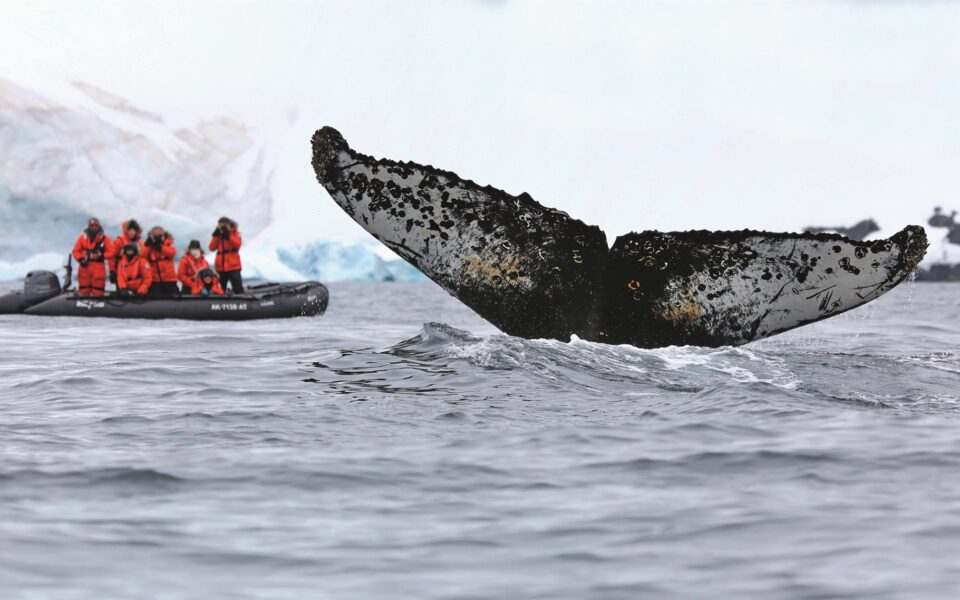
The sight of a humpback whale in the Mediterranean is rare. Just 45 have been spotted, photographed and recorded over the past decades. They are visitors who have passed through the Strait of Gibraltar, undertaking a unique kind of “exploratory tourism.” When a large humpback whale was spotted and photographed in 2020 in the waters of the northern part of the western Mediterranean, researchers discovered that it had only been photographed once before then. It was in the waters of the Dominican Republic in 1986! “A traveling soul,” who nevertheless likes to travel incognito…
Whales are very special creatures that need protection. Like all cetaceans living in our seas, they are indicators of the quality of the marine environment. Pollution, degradation and destruction of their habitats, the decline in fish stocks and therefore their food resources are placing unbearable pressure on their populations. A new type of “whale hunter” has been on their side for years. These people are not seeking to kill and commercially exploit them, but rather to protect them. They do not hunt them with harpoons, but with cameras. “It is very important for us to treat each whale, each cetacean, as an individual, with its specific characteristics. We identify it and gather insight into its movements,” Ted Cheeseman, a marine biologist and co-founder of the California-based web platform Happywhale.com, explains to Kathimerini. Beyond sound recordings or invasive transmitter placement, a very important method for decades has been photographic identification.
Telltale fins
Each whale and each dolphin is unique, they have their own special body, their own “fingerprint.” Each whale’s tail is distinctive, its edges, its color, possible spots. The same is true of dolphin fins, although it is harder to see the differences. Often in the harshest conditions, researchers carry out the process of photographing and archiving cetaceans.
One of the pioneers in this work is John Calambokidis, a marine biologist and co-founder of the Washington-based Cascadia Research Collective, with many years in the field. “We use the photographic identifications for a number of purposes including determining the population size and trends, movements and migrations, survival/mortality rates, and specific histories of whales impacted by human activities, including entanglements and ship strikes,” Calambokidis tells Kathimerini.
However, the whole process with the photos required a lot of time, effort and resources. Imagine old cameras with film and then comparing each new photo with a database of each species to find an older photographic record of the whale or dolphin caught by the lens. Recently a major effort has been made to combine three new features. The first is artificial intelligence – the use of algorithms, that is, to digitally compare tens of thousands of photographs in a very short time. The second is the use of human face recognition software. With controversial or even problematic applications for use with humans, with marine animals it will be used for a good cause. Of course, instead of faces, it will analyze tails and fins, with whales and dolphins “smiling” in their own way at the lens. The third is international scientific cooperation and citizen science, which has fed and continues to feed AI with a wealth of material.
“The development of the algorithm was the result of an extensive collaboration of 56 scientists and research teams from all over the world, who processed more than 80,000 images of 24 cetacean species from all the seas of the world,” Anastasia Miliou stresses to Kathimerini. Miliou is scientific director of the Archipelagos Institute of Marine Conservation, which participated from Greece in this big project by providing thousands of dolphin photos from the Aegean Sea. Last summer, the scientific publication of the methodology was released.
“By developing very accurate and fast automated image recognition of humpback whale tails, and now developing dorsal fin recognition for many whale and dolphin species, we are able to eliminate the most labor-intensive step of the research work: Instead of taking one hour per photo to identify an individual by visually comparing a whale to every other known individual, we can find matches – or know if our whale is new – instantaneously. This has allowed us to unite a global dataset for humpback whales, where we have now gathered a dataset of over 90,000 individual whales. In the North Pacific Ocean, we know, in one database, the majority of living individuals,” Cheeseman tells Kathimerini.
‘It is very important for us to treat each whale, each cetacean, as an individual, with its specific characteristics’
“It has taken a huge investment of human effort over the eight years of Happywhale’s operation, building on decades of work by Calambokidis and other research colleagues who have devoted hundreds of thousands of hours in the field to gather the data this was built on. For Happywhale, we have built image recognition algorithms and the system to manage the data, step by step with input from research colleagues and also with contributions from citizen science, so that we now have gathered almost one million images,” adds Cheeseman.
Accuracy of IDs
How accurate is the identification of whales, dolphins and other cetaceans through AI? “For humpback whale tails, with good- to high-quality photography, accuracy is as high as 97-99%. Dorsal fin identification varies quite a bit depending on the species and image quality. The best cases are as accurate as the humpback whale tail algorithm,” comments the co-founder of Happywhale.
All this has strengthened the protection of marine life. “They have enabled research collaborations across much larger areas and longer timescales, making it possible to understand the status of populations and the health of the marine ecosystem more accurately and affordably.
We have, for example, published research papers demonstrating that juvenile whales are more likely to get entangled in fishing gear than adults, and demonstrating that an entangled whale is less likely to survive. We have also documented the impact of marine heatwaves on whale survival and helped to secure agreements to reduce ship speeds in a large area of Antarctica.”
Appreciating the contribution of scientific research more broadly, Calambokidis notes that “whale protection has improved dramatically over the decades. First and most important was the cessation of commercial whaling, but now there have been improvements in other areas. This has included moving shipping lanes and slowing ships to reduce collisions with whales. Off California, major efforts have been made to reduce entanglements in fishing gear, even by changing the timing of the start of the crab fishery season, or placing restrictions on vessels approaching whales in some areas. Despite all of this, there is room for major improvement in each of these areas to further protect marine life.
These may seem very far away, but the Aegean also has wonderful marine creatures that deserve our protection. “For many years we have been monitoring from our boats and studying the common dolphin (Delphinus delphis), which, contrary to its name, is not common at all. Its population has almost disappeared from the rest of the Mediterranean, and in the Eastern Mediterranean it is classified as endangered,” says Miliou.
Since 2001, Archipelagos Institute researchers have been searching for the common dolphin in the eastern Aegean, without finding any. “We recorded it for the first time in 2008, while in the last five years alone we have identified through photo-identification 172 different individuals of the species. We distinguish the different individuals by the distinctive markings on their fins and body,” explains the scientific director of Archipelagos.
The researchers do not stop at just recording but try to understand the interactions among the different dolphins. “We processed the research data through so-called social network analysis. We uncovered 12 different subgroups of common dolphins, with no distinct social structure – that is, the dolphins choose their company, which they change. It is estimated that these subpopulations of common dolphins travel long distances from the northeastern to the southern Aegean Sea,” explains Miliou.
“The better we know a species, the better we can protect it. There is a lot to be done though, as there is still so much we do not know about the wonderful world of cetaceans,” adds the marine biologist. Unfortunately, in Greece we are far behind in the protection of marine life. Nowadays, the dolphin populations in the Aegean and the cetaceans that “frequent” the Hellenic trench are threatened by the overconcentration of vessels and plans for offshore hydrocarbon exploitation.
Cheeseman and Happywhale are attempting new approaches. “Through open data and citizen interaction, we are bringing science closer to the people. Science communicated is much more valuable to society – much more impactful for marine life protection than science that only is accessible to researchers,” he says.
“Connecting people to a whale or a dolphin can connect them to the whole ocean, so it is a great tool for conservation. We are far more likely to become emotionally connected to one whale with a story or one whale that we have personally encountered than we are to connect with numbers and statistics about marine ecology.”
